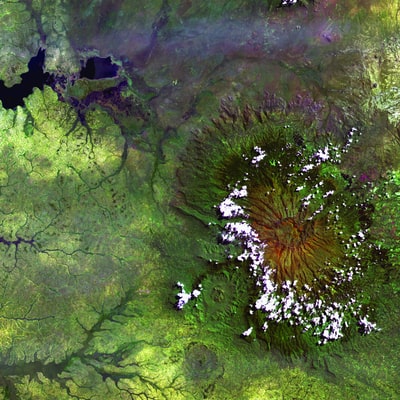Rocinha in Rio de Janeiro
Many of Brazil’s major cities are surrounded by favelas – shanty towns. One of the largest of these is Rocinha, on the outskirts of Rio de Janeiro. The favela is built on a very steep hill and up to 100,000 people make their home there. The area has long been associated with crime and drugs
but many respectable people live there and travel to work in the city.
Many of Rocinha’s inhabitants are unhappy with the way the area has been portrayed and are doing their best to make the favela a clean, safe place in which to live and bring up children. Many have built new houses of brick and tile, and have set up their own shops and small industries to earn money.
Rio’s council have also stepped in and paved some roads, brought electricity to the favela and improved sanitation. Locals have been given jobs and Rocinha now has health and sports facilities.
Fast-growing urban centres in poorer parts of the world need careful management, especially of the effects of waste on the environment.
When a major disaster occurs, such as war, earthquake or famine, large numbers of people may be forced to leave their homes and congregate on the outskirts of a city. The arrival of large numbers of migrants has a huge impact on housing, health services and the environment. Squatter camps are often built on rubbish dumps and have little or no sanitisation. When there is no sanitisation the area can quickly become dangerously unclean so the authorities must try to supply basic facilities or there could be an epidemic.
A great deal of waste is generated which must be disposed of as soon as possible in order to prevent disease. However even arranging refuse collection can be difficult. Most cities hosting squatter camps don’t have much money and most squatter camps don’t even have paved roads for rubbish trucks to take away trash.
When the air and water are polluted there are serious health implications for people living in the camps. Air pollution is caused by hazardous chemicals, building materials such as asbestos and heavy industry. People may be affected by associated health problems such as lung disease and cancers. When water is polluted – by animal or human waste, chemicals and industry – diseases like cholera and dysentery become rife.
Many diseases can be prevented by the supply of clean drinking water, regular waste removal, adequate sanitisation, building houses away from toxic dumps and other measures, but unfortunately many countries don’t have the resources – and sometimes the will – to make life bearable for the poorest people in society.

